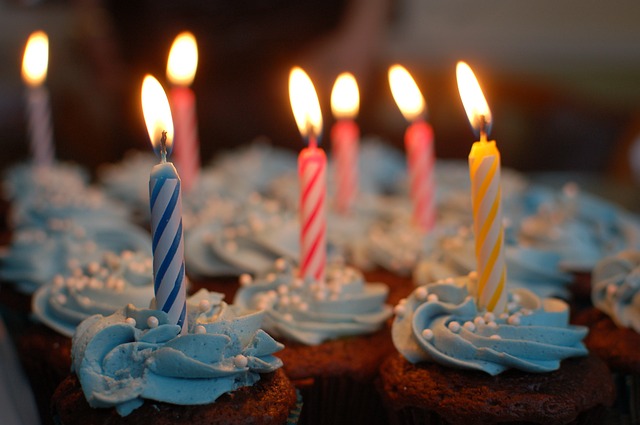Skip over navigation

As they work on the first part of the task, look out for different ways that learners are recording what they are doing. You could use a mini-plenary to share some of these, which will support those children who might be struggling to get going.
In the second part of the task, learners will have to make assumptions about how long a candle lasts. Again, a mini-plenary could be useful to share some of their thoughts. Make it clear that there will be many answers to this part of the problem, depending on how long they think a candle will last, so it is important for children to communicate their assumptions.
(The 'Further note' section at the bottom of this page offers further support in nurturing curiosity in the classroom more generally.)
Tell me about your answers.

Over time the shape of the zeros would change but what if the candles could be used just twice, how many ones and how many zeros would you need altogether?
The Rise and Fall of Curiosity - the extract from 23.50 to 37.15 on adult encouragement and teacher behaviour is particularly worth viewing
The Hungry Mind: The Origins of Curiosity - the extract from 8.22 to 12.29 on children asking questions is especially useful.

Or search by topic
Number and algebra
Geometry and measure
Probability and statistics
Working mathematically
Advanced mathematics
For younger learners
Birthday Cake Candles
Age 7 to 11
Challenge Level 





- Problem
- Getting Started
- Student Solutions
- Teachers' Resources
Birthday Cake Candles

Baby Ben is turning one. His parents are planning to celebrate his first birthday with a special cake which will have one candle on it.
They think about future birthdays too, when they will need more and more candles.
They are curious to know how many candles they will need to buy for his birthday cakes, up to and including his eleventh birthday...
They think about future birthdays too, when they will need more and more candles.
They are curious to know how many candles they will need to buy for his birthday cakes, up to and including his eleventh birthday...
If candles last less than a year, how many candles will they need for Ben's cakes, up to and including his eleventh birthday?
How do you know?
What if the candles are able to last for longer than one year?
How many candles will they need for his cakes, up to and including his eleventh birthday now?
How did you work this out?
How do you know?
What if the candles are able to last for longer than one year?
How many candles will they need for his cakes, up to and including his eleventh birthday now?
How did you work this out?
Why do this problem?
This activity uses a familiar non-mathematical situation to spark learners' mathematical curiosity. The fact that they may not immediately know a way of getting to a solution will encourage exploration of the counting numbers and calculation strategies, which in turn provides an opportunity for development of deep understanding.Possible approach
The activity needs little introduction but it can be brought to life with cake (or a model of one!) and some candles to enact the 'story'. It may be helpful to talk through three birthdays, adding candles appropriately, before setting children off on the challenges.As they work on the first part of the task, look out for different ways that learners are recording what they are doing. You could use a mini-plenary to share some of these, which will support those children who might be struggling to get going.
In the second part of the task, learners will have to make assumptions about how long a candle lasts. Again, a mini-plenary could be useful to share some of their thoughts. Make it clear that there will be many answers to this part of the problem, depending on how long they think a candle will last, so it is important for children to communicate their assumptions.
(The 'Further note' section at the bottom of this page offers further support in nurturing curiosity in the classroom more generally.)
Key questions
Can you tell me how you are working this out?Tell me about your answers.
Possible extension
Pupils who have explored binary numbers (which use just zeros and ones) as well as the usual decimal numbers, could explore the use of candles like those shown below and explore how to make the numbers from one to eleven.
Over time the shape of the zeros would change but what if the candles could be used just twice, how many ones and how many zeros would you need altogether?
Possible support
Encourage learners to use practical equipment to represent the candles. (Try not to pre-empt who might benefit from the equipment, wait for learners themselves to request it.)Further note
You may be interested in the following talks given by Professor Susan Engels, which focus on encouraging curiosity and are available on YouTube:The Rise and Fall of Curiosity - the extract from 23.50 to 37.15 on adult encouragement and teacher behaviour is particularly worth viewing
The Hungry Mind: The Origins of Curiosity - the extract from 8.22 to 12.29 on children asking questions is especially useful.
You may also like
Geoboards
This practical challenge invites you to investigate the different squares you can make on a square geoboard or pegboard.

